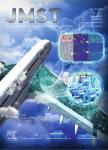Superior low cycle fatigue property from cell structures in additively manufactured 316L stainless steel
Superior low cycle fatigue property from cell structures in additively manufactured 316L stainless steel作者机构:Department of Management and EngineeringDivision of Engineering MaterialsLinköping UniversityLinköping SE-58183Sweden Shenyang National Laboratory for Materials ScienceInstitute of Metal ResearchChinese Academy of SciencesShenyang 110016China School of Materials Science and EngineeringThe University of New South WalesSydneyNSW 2052Australia I-FormAdvanced Manufacturing Research CentreDublin City UniversityDublin 9Ireland Ji Hua LaboratoryFoshan 528200China
出 版 物:《Journal of Materials Science & Technology》 (材料科学技术(英文版))
年 卷 期:2022年第111卷第16期
页 面:268-278页
核心收录:
学科分类:0806[工学-冶金工程] 0817[工学-化学工程与技术] 08[工学] 0805[工学-材料科学与工程(可授工学、理学学位)] 080502[工学-材料学] 0703[理学-化学] 0802[工学-机械工程] 0702[理学-物理学] 0801[工学-力学(可授工学、理学学位)]
基 金:financially supported by the Swedish Governmental Agency for Innovation Systems(Vinnova grant No.2016–05175) the Center for Additive Manufacturingmetal(CAM2) financially supported in part by a research grant from Science Foundation Ireland(SFI)under Grant No.16/RC/3872 cofounded under the European Regional Development Fund and by the I-Form industry partners financial support(Grant No.X210141TL210)
主 题:Additive manufacturing 316L stainless steel Fatigue behavior Cellular structure Nanotwins
摘 要:We have investigated the low cycle fatigue(LCF)properties and the extent of strengthening in a dense additively manufactured stainless steel containing different volume fractions of cell structures but having all other microstructure characteristics the *** samples were produced by laser powder bed fusion(L-PBF),and the concentration of cell structures was varied systematically by varying the annealing ***-controlled fatigue experiments performed on samples with a high fraction of cell structures reveal an up to 23 times increase in fatigue life compared to an essentially cell-free sample of the same grain *** electron microscopy characterizations reveal that the cell structures serve as the soft barriers to the dislocation propagation and the partials are the main carrier for cyclic *** cell structures,stabilized by the segregated atoms and misorientation between the adjacent cells,are retained during the entire plastic deformation,hence,can continuously interact with dislocations,promote the formation of nanotwins,and provide massive 3D network obstacles to the dislocation *** compositional micro-segregation caused by the cellular solidification features serves as another nonnegligible strengthening mechanism to dislocation ***,the cell structures with a high density of dislocation debris also appear to act as dislocation nucleation sites,very much like coherent twin *** work indicates the potential of additive manufacturing to design energy absorbent alloys with high performance by tailoring the microstructure through the printing process.



